Related Research Articles
The Copenhagen interpretation is a collection of views about the meaning of quantum mechanics, stemming from the work of Niels Bohr, Werner Heisenberg, Max Born, and others. While "Copenhagen" refers to the Danish city, the use as an "interpretation" was apparently coined by Heisenberg during the 1950s to refer to ideas developed in the 1925–1927 period, glossing over his disagreements with Bohr. Consequently, there is no definitive historical statement of what the interpretation entails.
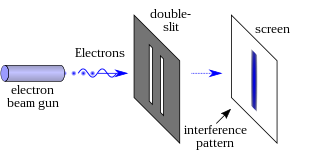
In modern physics, the double-slit experiment demonstrates that light and matter can satisfy the seemingly incongruous classical definitions for both waves and particles. This ambiguity is considered evidence for the fundamentally probabilistic nature of quantum mechanics. This type of experiment was first performed by Thomas Young in 1801, as a demonstration of the wave behavior of visible light. In 1927, Davisson and Germer and, independently George Paget Thomson and his research student Alexander Reid demonstrated that electrons show the same behavior, which was later extended to atoms and molecules. Thomas Young's experiment with light was part of classical physics long before the development of quantum mechanics and the concept of wave–particle duality. He believed it demonstrated that Christiaan Huygens' wave theory of light was correct, and his experiment is sometimes referred to as Young's experiment or Young's slits.
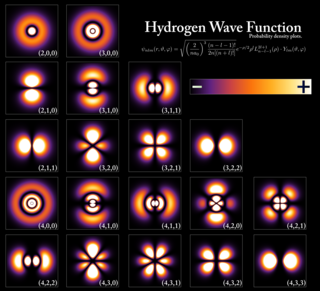
Quantum mechanics is a fundamental theory that describes the behavior of nature at and below the scale of atoms. It is the foundation of all quantum physics, which includes quantum chemistry, quantum field theory, quantum technology, and quantum information science.
Newton's laws of motion are three physical laws that describe the relationship between the motion of an object and the forces acting on it. These laws, which provide the basis for Newtonian mechanics, can be paraphrased as follows:
- A body remains at rest, or in motion at a constant speed in a straight line, except insofar as it is acted upon by a force.
- At any instant of time, the net force on a body is equal to the body's acceleration multiplied by its mass or, equivalently, the rate at which the body's momentum is changing with time.
- If two bodies exert forces on each other, these forces have the same magnitude but opposite directions.

David Jeffrey Griffiths is an American physicist and educator. He was on the faculty of Reed College from 1978 through 2009, becoming the Howard Vollum Professor of Science before his retirement. He wrote three highly regarded textbooks for undergraduate physics students.
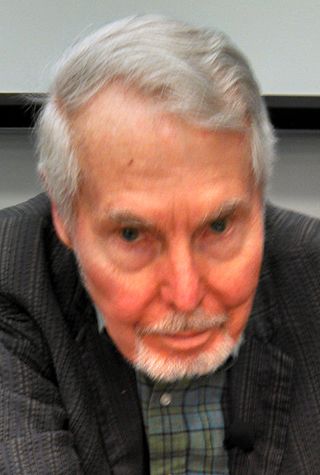
John David Jackson was a Canadian–American theoretical physicist. He was a professor at the University of California, Berkeley and a faculty senior scientist emeritus at Lawrence Berkeley National Laboratory.
Mehran Kardar is an Iranian born physicist and professor of physics at the Massachusetts Institute of Technology (MIT), and co-faculty at the New England Complex Systems Institute (USA). He received his B.A. in physics from the University of Cambridge in 1979, and obtained his Ph.D. from MIT in 1983. Kardar is particularly known for the Kardar–Parisi–Zhang (KPZ) equation in theoretical physics, which has been named after him and his two coauthors: the Nobel Prize laureate Giorgio Parisi, and Yi-Cheng Zhang. He was awarded a Guggenheim Fellowship in 2001.

Giorgio Parisi is an Italian theoretical physicist, whose research has focused on quantum field theory, statistical mechanics and complex systems. His best known contributions are the QCD evolution equations for parton densities, obtained with Guido Altarelli, known as the Altarelli–Parisi or DGLAP equations, the exact solution of the Sherrington–Kirkpatrick model of spin glasses, the Kardar–Parisi–Zhang equation describing dynamic scaling of growing interfaces, and the study of whirling flocks of birds. He was awarded the 2021 Nobel Prize in Physics jointly with Klaus Hasselmann and Syukuro Manabe for groundbreaking contributions to theory of complex systems, in particular "for the discovery of the interplay of disorder and fluctuations in physical systems from atomic to planetary scales".

Classical mechanics is a physical theory describing the motion of objects such as projectiles, parts of machinery, spacecraft, planets, stars, and galaxies. The development of classical mechanics involved substantial change in the methods and philosophy of physics. The qualifier classical distinguishes this type of mechanics from physics developed after the revolutions in physics of the early 20th century, all of which revealed limitations in classical mechanics.

The Course of Theoretical Physics is a ten-volume series of books covering theoretical physics that was initiated by Lev Landau and written in collaboration with his student Evgeny Lifshitz starting in the late 1930s.

The Feynman Lectures on Physics is a physics textbook based on a great number of lectures by Richard Feynman, a Nobel laureate who has sometimes been called "The Great Explainer". The lectures were presented before undergraduate students at the California Institute of Technology (Caltech), during 1961–1964. The book's co-authors are Feynman, Robert B. Leighton, and Matthew Sands.

Classical Electrodynamics is a textbook written by theoretical particle and nuclear physicist John David Jackson. The book originated as lecture notes that Jackson prepared for teaching graduate-level electromagnetism first at McGill University and then at the University of Illinois at Urbana-Champaign. Intended for graduate students, and often known as Jackson for short, it has been a standard reference on its subject since its first publication in 1962.

Introduction to Electrodynamics is a textbook by physicist David J. Griffiths. Generally regarded as a standard undergraduate text on the subject, it began as lecture notes that have been perfected over time. Its most recent edition, the fifth, was published in 2023 by Cambridge University. This book uses SI units exclusively. A table for converting between SI and Gaussian units is given in Appendix C.
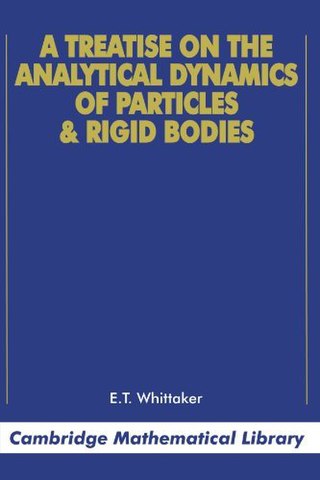
A Treatise on the Analytical Dynamics of Particles and Rigid Bodies is a treatise and textbook on analytical dynamics by British mathematician Sir Edmund Taylor Whittaker. Initially published in 1904 by the Cambridge University Press, the book focuses heavily on the three-body problem and has since gone through four editions and has been translated to German and Russian. Considered a landmark book in English mathematics and physics, the treatise presented what was the state-of-the-art at the time of publication and, remaining in print for more than a hundred years, it is considered a classic textbook in the subject. In addition to the original editions published in 1904, 1917, 1927, and 1937, a reprint of the fourth edition was released in 1989 with a new foreword by William Hunter McCrea.

Lectures on Theoretical Physics is a six-volume series of physics textbooks translated from Arnold Sommerfeld's classic German texts Vorlesungen über Theoretische Physik. The series includes the volumes Mechanics, Mechanics of Deformable Bodies, Electrodynamics, Optics, Thermodynamics and Statistical Mechanics, and Partial Differential Equations in Physics. Focusing on one subject each semester, the lectures formed a three-year cycle of courses that Sommerfeld repeatedly taught at the University of Munich for over thirty years. Sommerfeld's lectures were famous and he was held to be one of the greatest physics lecturers of his time.

Introduction to Quantum Mechanics, often called Griffiths, is an introductory textbook on quantum mechanics by David J. Griffiths. The book is considered a standard undergraduate textbook in the subject. Originally published by Pearson Education in 1995 with a second edition in 2005, Cambridge University Press (CUP) reprinted the second edition in 2017. In 2018, CUP released a third edition of the book with Darrell F. Schroeter as co-author; this edition is known as Griffiths and Schroeter.
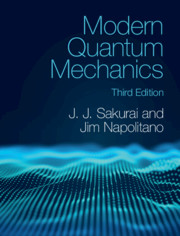
Modern Quantum Mechanics, often called Sakurai or Sakurai and Napolitano, is a standard graduate-level quantum mechanics textbook written originally by J. J. Sakurai and edited by San Fu Tuan in 1985, with later editions coauthored by Jim Napolitano. Sakurai died in 1982 before he could finish the textbook and both the first edition of the book, published in 1985 by Benjamin Cummings, and the revised edition of 1994, published by Addison-Wesley, were edited and completed by Tuan posthumously. The book was updated by Napolitano and released two later editions. The second edition was initially published by Addison-Wesley in 2010 and rereleased as an eBook by Cambridge University Press, who released a third edition in 2020.
References
- ↑ "AAPT Named Mehran Kardar as the 2018 John David Jackson Excellence in Graduate Physics Education Awardee". American Association of Physics Teachers . 2017-10-10. Retrieved 2020-04-19.
- ↑ Chandler, David (May 2009). "Statistical Physics of Particles; Statistical Physics of Fields". Physics Today . 62 (5): 55–56. Bibcode:2009PhT....62e..55K. doi: 10.1063/1.3141944 . ISSN 0031-9228.
- ↑ Milonni, Peter W. (January 2011). "Statistical Physics of Particles, by Mehran Kardar: Scope: textbook. Level: advanced undergraduate and graduate". Contemporary Physics . 52 (1): 86–87. Bibcode:2011ConPh..52...86M. doi:10.1080/00107514.2010.514121. ISSN 0010-7514. S2CID 122360437.